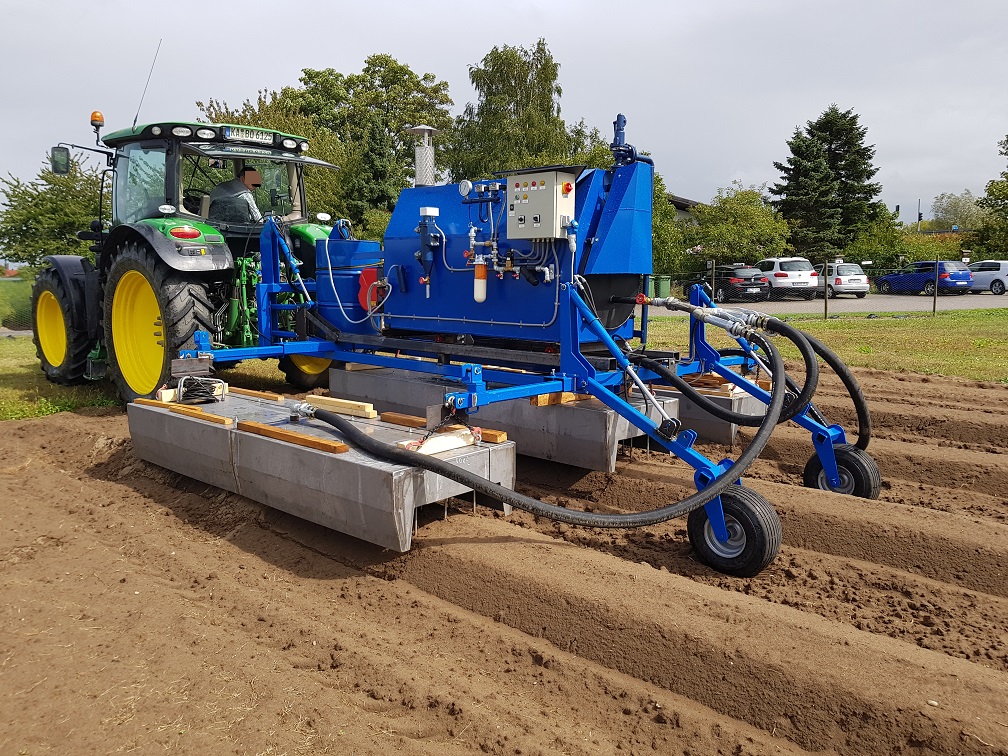Based on extensively executed steam sterilizations in 2017, MSD Corp. has now developed and filed a patent for a novel steaming system. With one unit of this steaming system, it will be possible to steam up to 160m³ of soil in a working day of fewer than 8h. This steaming system will primarily be used for large quantities of heterogeneous soil, in which a considerable portion of heavier soils must be sanitised.

Once again. MSD AG had to optimize many components of the system. Thus, we achieved our aim of making the container self-cleaning and hence creating minimal costs for maintaining the needed steaming quality even across numerous steaming sessions.
Apart from the material, we worked on the methodology, which, despite the relatively high throughputs, guarantees that all harmful plant material present in the soil to be steamed is completely killed off. Above all, absorption volume in relation to steam exposure time and quantity play an important role here. A patent has been filed for the new method. More information can be requested directly from MSD: www.msd-ag.de


















